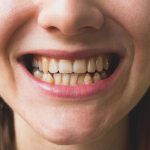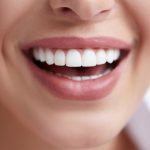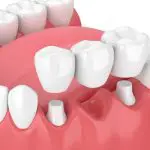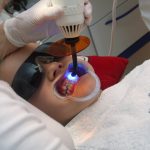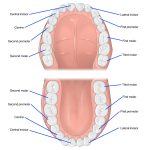Whiter Smiles with Braces: A Comprehensive Guide on How to Get White Teeth
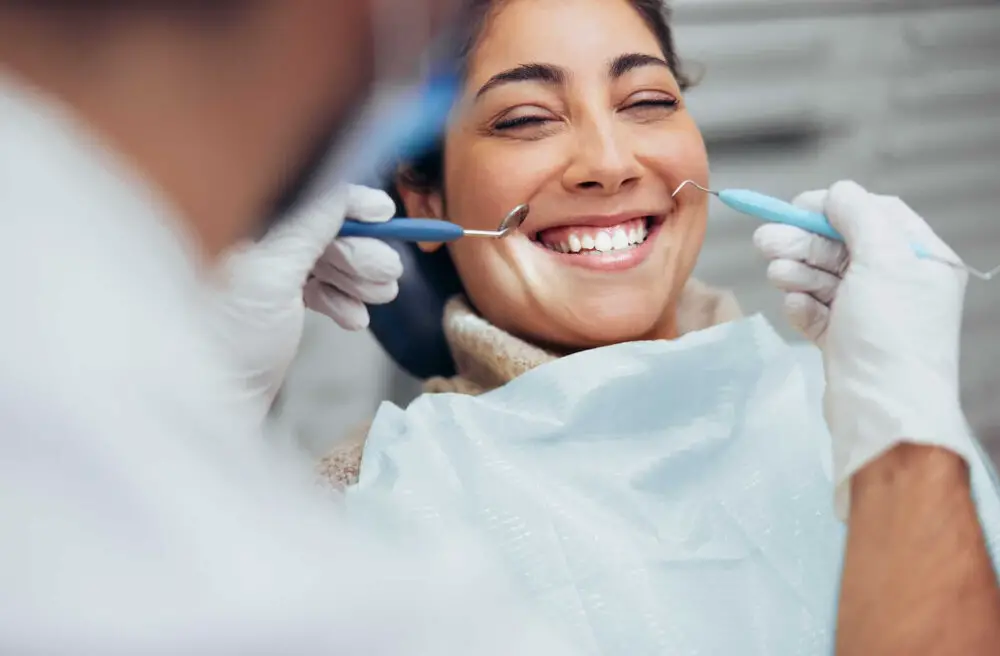
Are you tired of feeling self-conscious about your smile while wearing braces? Do you want to achieve a brighter, whiter smile that you can show off with confidence? Look no further, as this comprehensive guide will provide you with everything you need to know about getting white teeth with braces. Braces are an essential tool for correcting dental issues such as misaligned teeth, overbite, and underbite. While braces do a fantastic job of straightening teeth, they can also make it challenging to maintain good oral hygiene and keep your teeth white. However, by following the tips and tricks outlined in this guide, you can achieve a bright, healthy smile while undergoing orthodontic treatment. From at-home remedies to in-office treatments, this guide will cover all the bases to ensure that you achieve that coveted white smile!
Braces are commonly known to straighten teeth, but they can also have an impact on the color of your teeth. The brackets and wires used in braces can make it challenging to brush and floss thoroughly, leading to the buildup of plaque and bacteria. This buildup can cause discoloration on the tooth’s surface and create unsightly yellow or brown stains. Additionally, certain foods and drinks that are known to stain teeth, such as coffee, tea, and red wine, can be more difficult to clean off with braces. Therefore, it’s crucial to maintain good oral hygiene habits and avoid consuming staining substances to keep your teeth pearly white while undergoing orthodontic treatment.
Maintaining good oral hygiene during orthodontic treatment is crucial for achieving a healthy and beautiful smile. Braces create many nooks and crevices where food particles and bacteria can accumulate, leading to plaque buildup and tooth decay. If left untreated, this can result in gum disease, bad breath, and even tooth loss. Therefore, regular brushing and flossing, as well as using mouthwash, are essential to keep your teeth and gums clean and healthy. In addition, avoiding sugary and sticky foods can help prevent the buildup of plaque and reduce the risk of cavities. By following these simple tips, you can ensure that your orthodontic treatment is successful and that you achieve the beautiful, white smile you deserve.
Understanding tooth discoloration
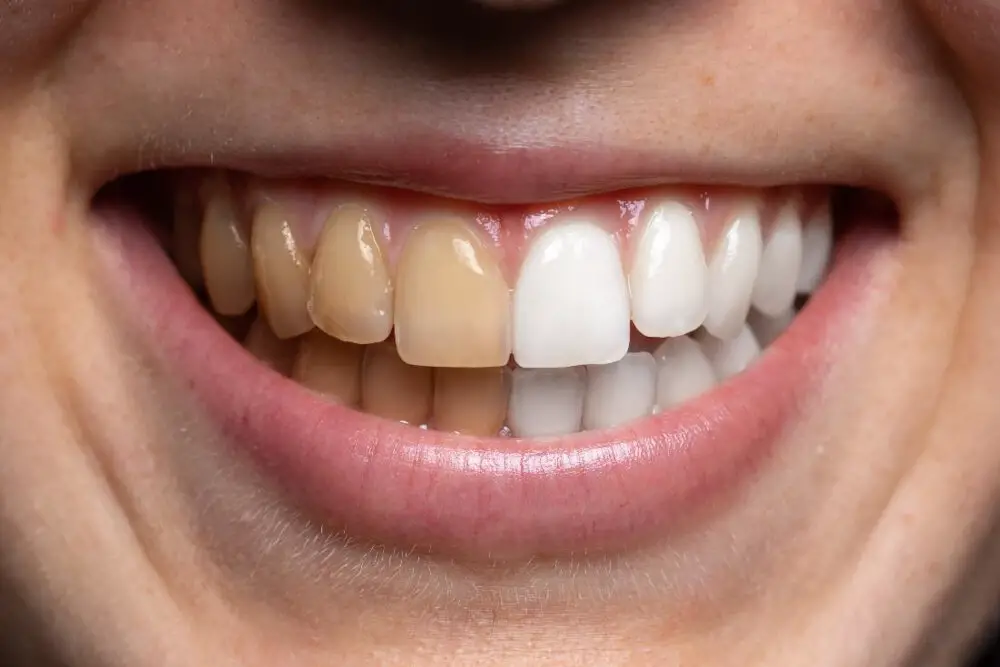
Tooth discoloration is a common dental problem that affects people of all ages. It is characterized by the darkening or yellowing of teeth, which can be caused by several factors. One of the most common causes of tooth discoloration is poor oral hygiene. When you don’t brush and floss your teeth regularly, plaque and tartar buildup can lead to stains and discoloration. Other causes of tooth discoloration include drinking coffee, tea, or red wine, smoking, and consuming certain medications. Tooth discoloration can be classified into two types: extrinsic and intrinsic discoloration. Extrinsic discoloration is when the outer layer of the tooth, also known as the enamel, is stained by external factors such as food, drinks, and tobacco. This type of discoloration can usually be treated with teeth whitening procedures. On the other hand, intrinsic discoloration is when the inner structure of the tooth, known as the dentin, becomes discolored. This type of discoloration is often caused by trauma, aging, or certain medications. Intrinsic discoloration can be more difficult to treat, but there are still options available such as veneers or bonding.
Tooth discoloration is a common dental problem that can affect people of all ages. Some of the most common causes of tooth discoloration include poor oral hygiene, certain foods and beverages, smoking, aging, genetics, and certain medications. Poor oral hygiene can lead to the buildup of plaque and tartar, which can cause teeth to become yellow or brown. Certain foods and beverages, such as coffee, tea, red wine, and berries, can also stain teeth over time. Smoking not only stains teeth but also increases the risk of gum disease and oral cancer. Aging and genetics can also play a role in tooth discoloration, as enamel naturally wears down over time, and some people are simply more prone to discoloration than others. Finally, certain medications, such as antibiotics, can cause teeth to become discolored as a side effect. By understanding the common causes of tooth discoloration, you can take steps to prevent it and achieve a brighter, healthier smile.
Wearing braces is an excellent way to straighten teeth and achieve a beautiful, healthy smile. However, braces can also contribute to discoloration of teeth. This is because braces can make it difficult to clean teeth properly, leading to the buildup of plaque and bacteria. Additionally, brackets and wires can trap food particles, further contributing to discoloration. To prevent discoloration while wearing braces, it is essential to maintain a rigorous oral hygiene routine, including brushing and flossing regularly and using an antiseptic mouthwash. Additionally, avoiding foods and drinks that can stain teeth, such as coffee, tea, and red wine, can help keep your teeth looking bright and white throughout your orthodontic treatment.
Maintaining good oral hygiene with braces
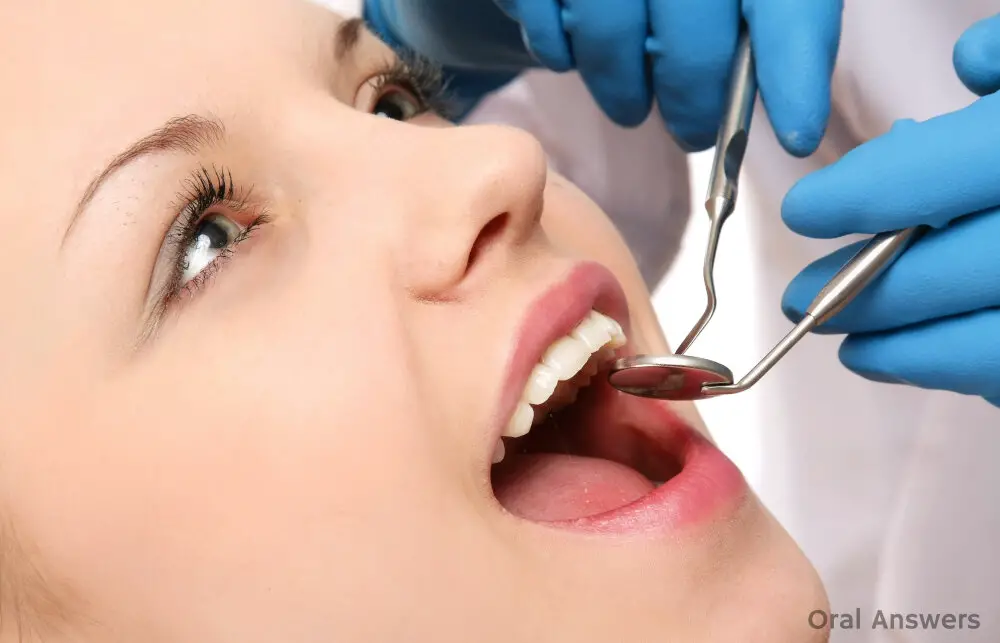
Maintaining good oral hygiene with braces can be a challenge, but it is essential to keep your teeth and gums healthy during the orthodontic treatment. Braces create more spaces for food particles and plaque to get trapped, leading to the development of tooth decay, bad breath, and gum disease. Therefore, it is crucial to follow a strict oral hygiene routine that includes brushing, flossing, and rinsing with mouthwash regularly. Brushing your teeth twice a day, preferably after meals, is the first step in maintaining good oral hygiene with braces. Use a soft-bristled toothbrush and fluoride toothpaste to remove plaque and food particles from the brackets and wires. Brush each tooth at a 45-degree angle, focusing on the gum line and the areas around the brackets. Don’t forget to brush the tongue and the roof of your mouth to get rid of bacteria and freshen your breath. Flossing is also crucial when you have braces, as it helps remove food debris and plaque from the spaces between the teeth and under the wires. Use a floss threader or a water flosser to make the process easier and more effective. Finally, rinse your mouth with an antiseptic mouthwash to kill bacteria and keep your mouth fresh and healthy. By maintaining good oral hygiene with braces, you can achieve a beautiful, healthy smile that lasts a lifetime.
Braces are a popular orthodontic treatment that helps to straighten teeth and improve a person’s smile. However, braces can make oral hygiene more challenging than usual. The brackets and wires of the braces create a lot of nooks and crannies in the mouth where food particles and bacteria can accumulate. These particles can be difficult to remove with a regular toothbrush, and if left uncleaned, they can cause tooth decay and gum disease. Flossing can also be more difficult with braces, as the wire can make it challenging to reach between the teeth. Therefore, it is essential for people with braces to practice good oral hygiene habits, such as brushing and flossing regularly, using a mouthwash, and avoiding sugary or sticky foods that can stick to the braces.
If you have braces, it is essential to maintain proper oral hygiene to avoid gum diseases, cavities, and staining. Brushing and flossing with braces can be a bit challenging, but with the right technique, it can be done effectively. When brushing, use a soft-bristled toothbrush and fluoride toothpaste to clean around the brackets and wires. Angle the brush at a 45-degree angle and brush in a circular motion. Flossing with braces requires a bit of patience and practice. Use a floss threader to get the floss under the wire and between the teeth. Move the floss gently up and down, making sure to get below the gum line. Rinse your mouth with water and use a mouthwash to help freshen your breath and kill bacteria. By following these tips, you can maintain good oral health and achieve a whiter, brighter smile even with braces on.
When it comes to oral hygiene for patients with braces, there are several products that are recommended to help maintain healthy teeth and gums. First and foremost, a soft-bristled toothbrush should be used to prevent damage to the brackets and wires. A fluoride toothpaste is ideal for strengthening teeth and fighting cavities. Flossing is also crucial, and floss threaders or interdental brushes can aid in reaching between the wires and teeth. Mouthwash can be used to kill bacteria and freshen breath. Additionally, orthodontic wax can be used to cover any brackets or wires that may be causing discomfort or irritation. By using these recommended products, patients with braces can keep their teeth and gums healthy and achieve a whiter smile.
Teeth whitening options for patients with braces

For patients wearing braces, teeth whitening options may seem limited due to the presence of brackets and wires. However, there are still some effective ways to achieve a whiter smile while undergoing orthodontic treatment. One approach is to use teeth whitening products that are specifically designed for use with braces, such as whitening gels and toothpaste. These products are formulated to penetrate between the brackets and wires to whiten the teeth underneath. It is important to follow the instructions carefully and avoid overuse, as excessive use of whitening products can cause tooth sensitivity and damage to the enamel. Another option for patients with braces is to wait until the braces are removed before undergoing a professional teeth whitening treatment. This approach allows for a more comprehensive whitening treatment that can address any discoloration or staining that may have occurred during the orthodontic treatment. However, it is important to maintain good oral hygiene during the orthodontic treatment to prevent further staining and discoloration. Regular brushing and flossing, as well as avoiding foods and drinks that can stain the teeth, can help to maintain a bright and healthy smile throughout the orthodontic treatment process.
There are several professional teeth whitening options available for those looking to achieve a brighter smile. In-office treatments, such as Zoom or BriteSmile, use a high-powered light and bleaching gel to remove stains and discoloration. These treatments can lighten teeth by several shades in just one visit. Take-home whitening kits, prescribed by a dentist, allow patients to whiten their teeth at their own pace using custom-fitted trays and a professional-grade bleaching gel. Another option is laser teeth whitening, which uses a laser to activate a bleaching agent applied to the teeth. It is important to consult with a dental professional to determine which option is best suited for individual needs and to ensure proper application and safety.
At-home teeth whitening options provide a convenient and cost-effective solution for those who want a brighter smile. One popular option is whitening strips, which are thin, flexible strips coated with a peroxide-based gel that are applied directly to the teeth. Another option is whitening trays, which are custom-made to fit over your teeth and filled with a whitening gel. LED teeth whitening kits are also becoming increasingly popular, using blue light technology to enhance the effects of the whitening gel. It’s important to note that while at-home options can be effective, they may not provide the same level of whitening as professional treatments. Additionally, it’s important to follow instructions carefully and avoid overuse, which can lead to sensitivity and damage to the enamel.
Teeth whitening considerations for patients with braces are essential to ensure that the process does not damage the brackets or wires. Before starting any teeth whitening treatment, it is necessary to check with the orthodontist if the braces are in good condition and if it is safe to proceed. Patients should also be aware that whitening products can only lighten the natural teeth and not the brackets or wires. Therefore, it is recommended to wait until the braces are removed before undergoing any whitening treatment. Additionally, patients may want to consider using whitening toothpaste and mouthwash to help maintain a brighter smile during their orthodontic treatment. Overall, it is vital to consult with a dental professional before attempting any teeth whitening treatment while wearing braces.
Additional tips for maintaining white teeth with braces
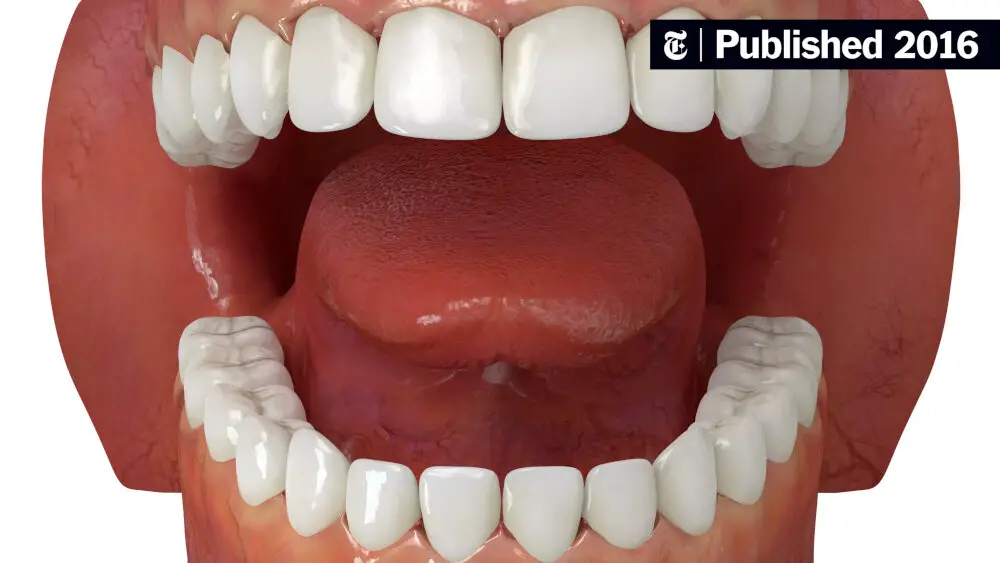
Maintaining white teeth can be a challenge for those who wear braces. However, there are some additional tips that can help you achieve a whiter smile even with braces on. First and foremost, it is essential to brush your teeth after every meal to prevent food particles from getting stuck in your braces. You can also use an interdental brush to clean the hard-to-reach areas between your teeth and braces. Make sure to brush your teeth thoroughly for at least two minutes each time using fluoride toothpaste. Additionally, you can use a water flosser to clean your teeth and braces thoroughly. It is recommended to use mouthwash with fluoride to help prevent tooth decay and keep your breath fresh. Another tip for maintaining white teeth with braces is to avoid consuming certain drinks and foods that can stain your teeth. For instance, drinks such as coffee, tea, and red wine can leave stains on your teeth. Foods such as berries, tomato sauce, and soy sauce can also stain your teeth. If you cannot avoid consuming these foods and drinks, you can use a straw to minimize the contact between the liquid and your teeth. It is also advisable to rinse your mouth with water after consuming these foods and drinks to prevent stains. Lastly, visit your orthodontist regularly for check-ups and cleaning to ensure that your braces are in good condition and your teeth are healthy. By following these additional tips, you can maintain white teeth with braces and achieve a beautiful smile.
Maintaining a healthy diet is a crucial aspect of achieving and maintaining a bright, white smile, even while wearing braces. It is important to limit the consumption of sugary and acidic foods and beverages, such as soda, candy, and sports drinks, which can erode tooth enamel and cause staining. Instead, opt for foods rich in calcium, phosphorus, and vitamin D, such as milk, cheese, and leafy greens, which help to strengthen teeth and protect against discoloration. Additionally, drinking plenty of water throughout the day can help to wash away food particles and keep teeth clean and bright. By making smart dietary choices, you can help to ensure that your teeth stay healthy and white, even while undergoing orthodontic treatment.
Regular dental checkups are a crucial aspect of maintaining good oral health and achieving a whiter smile, especially for those with braces. These checkups allow dentists to monitor the progress of orthodontic treatment and detect any issues early on. They also provide an opportunity for professional teeth cleaning, which can remove stubborn stains and improve the overall appearance of teeth. Additionally, regular dental checkups can help prevent more serious dental problems from arising, such as cavities, gum disease, and tooth decay. By staying on top of routine dental appointments, individuals can ensure that their orthodontic treatment stays on track and their teeth remain healthy and white.
Maintaining white teeth with braces can be a challenge, but it’s not impossible. The key takeaway is to practice good oral hygiene consistently. Brush your teeth after every meal and floss daily to remove any food particles or plaque that could stain your teeth. Avoid foods and drinks that are known to cause staining, such as coffee, tea, and red wine. If you do indulge in these items, rinse your mouth with water or brush your teeth immediately afterward. Consider using a whitening toothpaste or mouthwash to help lift surface stains. Lastly, schedule regular appointments with your orthodontist to ensure your braces are properly maintained and to discuss any concerns you have about your teeth. By following these tips, you can maintain white, healthy teeth throughout your orthodontic treatment.
Oral hygiene is a crucial aspect of our daily routine. It not only helps prevent tooth decay and gum diseases but also contributes to our overall health. As we all know, a beautiful smile can enhance our confidence and personality. Therefore, prioritizing oral hygiene and seeking professional advice for teeth whitening options is essential. With braces, maintaining good oral hygiene can be challenging, but it is not impossible. Regular brushing, flossing, and rinsing can help keep your teeth healthy and prevent stains. However, if you still feel unhappy with the color of your teeth, there are several teeth whitening options available. From professional treatments to at-home kits, you can choose the option that suits you best. Remember, a healthy and beautiful smile is worth the effort and investment.
Conclusion
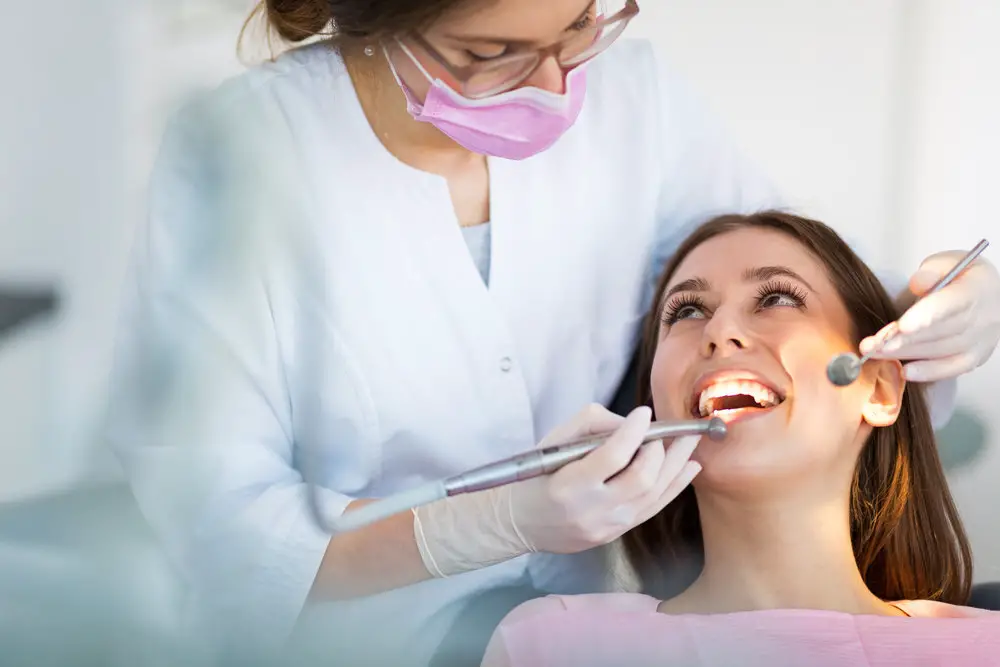
In conclusion, achieving a whiter smile with braces requires dedication, patience, and consistent oral hygiene practices. While braces can make it more challenging to keep teeth clean, there are various strategies and products available to help maintain a bright and healthy smile. By following the tips outlined in this comprehensive guide, individuals can enjoy the benefits of having straight and white teeth. Remember that a beautiful smile is not only aesthetically pleasing but also contributes to overall confidence and well-being. So, take care of your teeth and embrace your journey towards a brighter, healthier smile!
